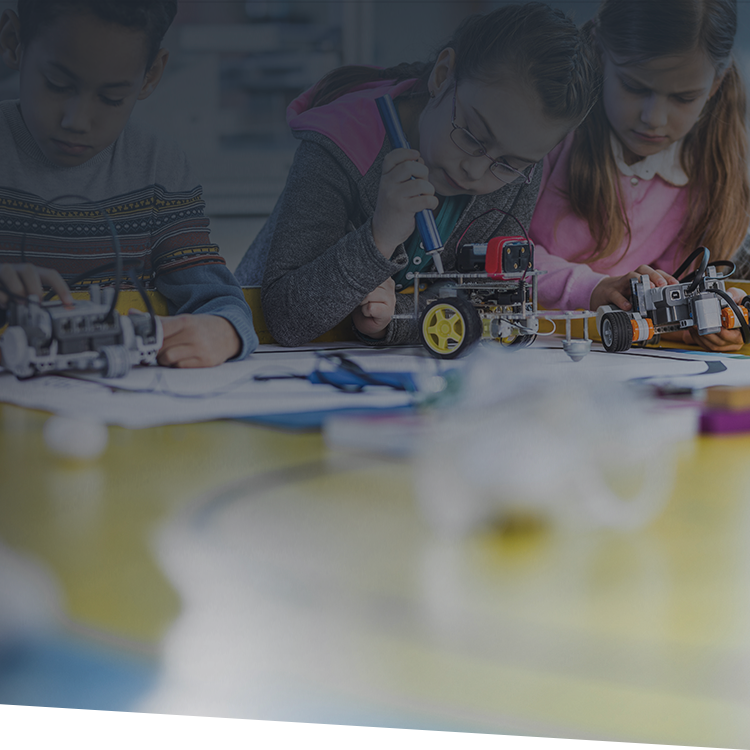No educator needs to be told there’s a student mental health crisis. Many causes have contributed to the drastic decline in student well-being, but a new study in the Journal of Pediatrics takes a different perspective.
The study argued that the decrease in time allotted for independent student activity—allowing students to work without direct oversight and control by adults—is a major cause of the student mental health crisis.
Their conclusion: Less structure and more play are needed to improve well-being for young people.
That may sound counterintuitive to some educators: This is a school, not a playground. But experts argue this way of thinking is outdated.
Makerspaces offer a solution—here’s what you should know about how makerspaces can improve your education environment.
What Are Makerspaces?
A makerspace is a designated area where students can find the tools to work on projects. The tools and the projects may vary—some makerspaces have basic arts and crafts supplies while others have more involved items like sewing machines and 3D printers. Regardless of the equipment, the philosophy is the same: A makerspace is an area dedicated to tinkering.
How Do Makerspaces Improve Student Mental Health?
The Journal of Pediatrics study noted children need to engage in play to develop self-confidence and resilience, which helps them work through the inevitable ups and downs that come with growing up.
“Parents today are regularly subject to messages about the dangers that might befall unsupervised children and the value of high achievement in school. But they hear little of the countervailing messages that if children are to grow up well-adjusted, they need ever-increasing opportunities for independent activity, including self-directed play and meaningful contributions to family and community life, which are signs that they are trusted, responsible, and capable. They need to feel they can deal effectively with the real world, not just the world of school,” said David F. Bjorklund, Ph.D., co-author of the study and a professor in the Department of Psychology in Florida Atlantic University’s Charles E. Schmidt College of Science.
Makerspaces provide this opportunity at school. Students are given space to learn how to solve problems and build beyond the confines of a carefully constructed lesson, as well as an opportunity for social-emotional development and identity formation.
In addition, crafting has shown to relieve stress and help process trauma. Some educators have intentionally used makerspaces to help students overcome the effects of traumatic events. But even without a specific program in place, a makerspace can be beneficial. For some students, an area set aside for them to work with their hands, away from the clamor of classrooms and hallways, is a meditative sanctuary.

Tune in to live webinars every week during the school year to get specific, research-backed insight you can immediately apply at your school.
How can I build a makerspace at my school?
It’s one thing to talk about innovating, but another to do it. Here are a few steps to install a makerspace at your school.
- Realize you already have everything you need. Don’t talk yourself out of building one because you assume your school can't work it into the budget. There are no official criteria for building a makerspace, as long as you’ve designated an area and stocked it with tools for tinkering. If you can afford some additional supplies, invest in items that will attract students, like tools for knitting, zine making, or game design. Likewise, a makerspace can exist in the corner of a classroom—but if there’s a quiet room you can commandeer, do it.
- Talk to your faculty. A good makerspace reflects its community’s needs. Let your school’s teachers tell you what they’d like to see in the makerspace and ask them how it could become a part of their curricula. Makerspaces are often associated with STEM courses, but they’re not exclusive to those fields, so be sure to bring the humanities departments into the conversation, too.
- Keep student mental health at the forefront. The greatest benefit of a makerspace is the freedom it provides students. With that in mind, avoid the temptation to turn the makerspace into another rigid classroom. Above all, makerspaces should be places where students feel they can play. In the process, they’ll not only learn, they’ll also thrive.






